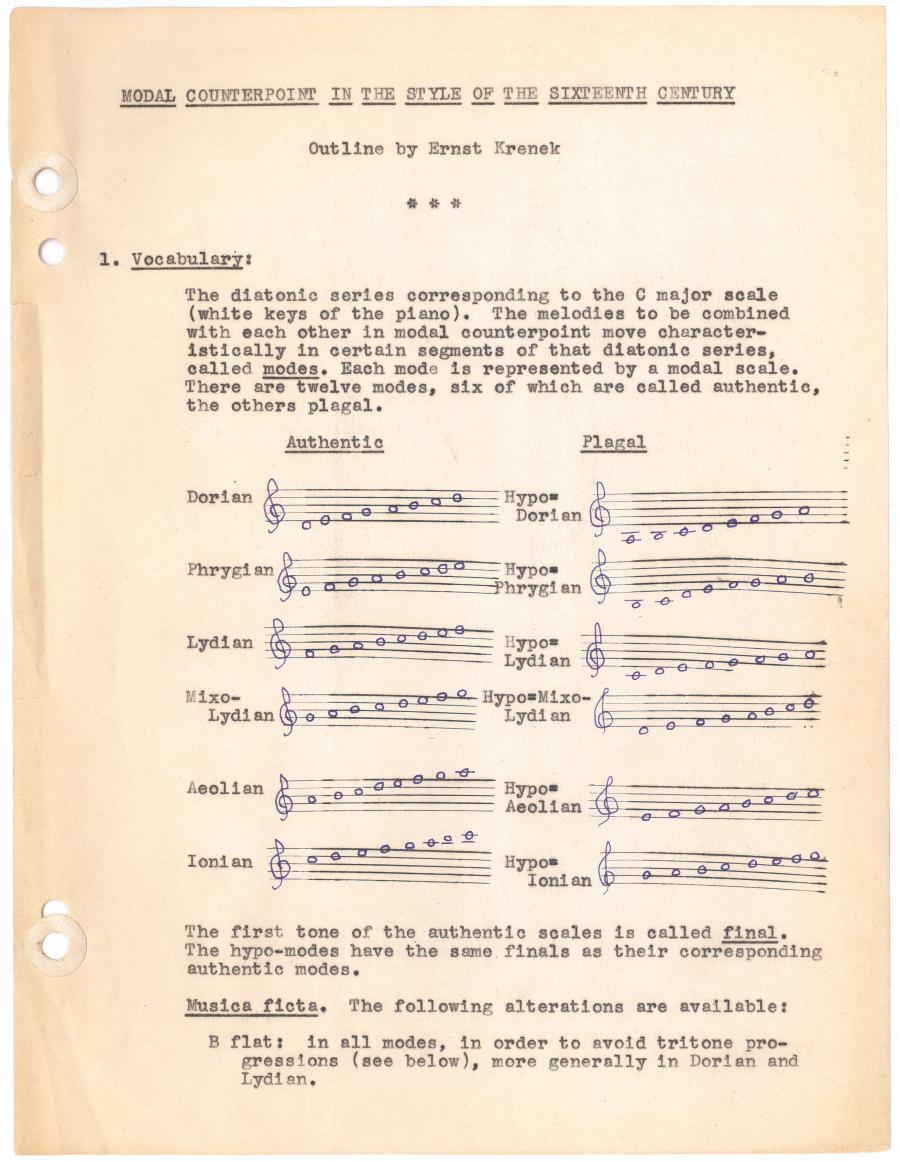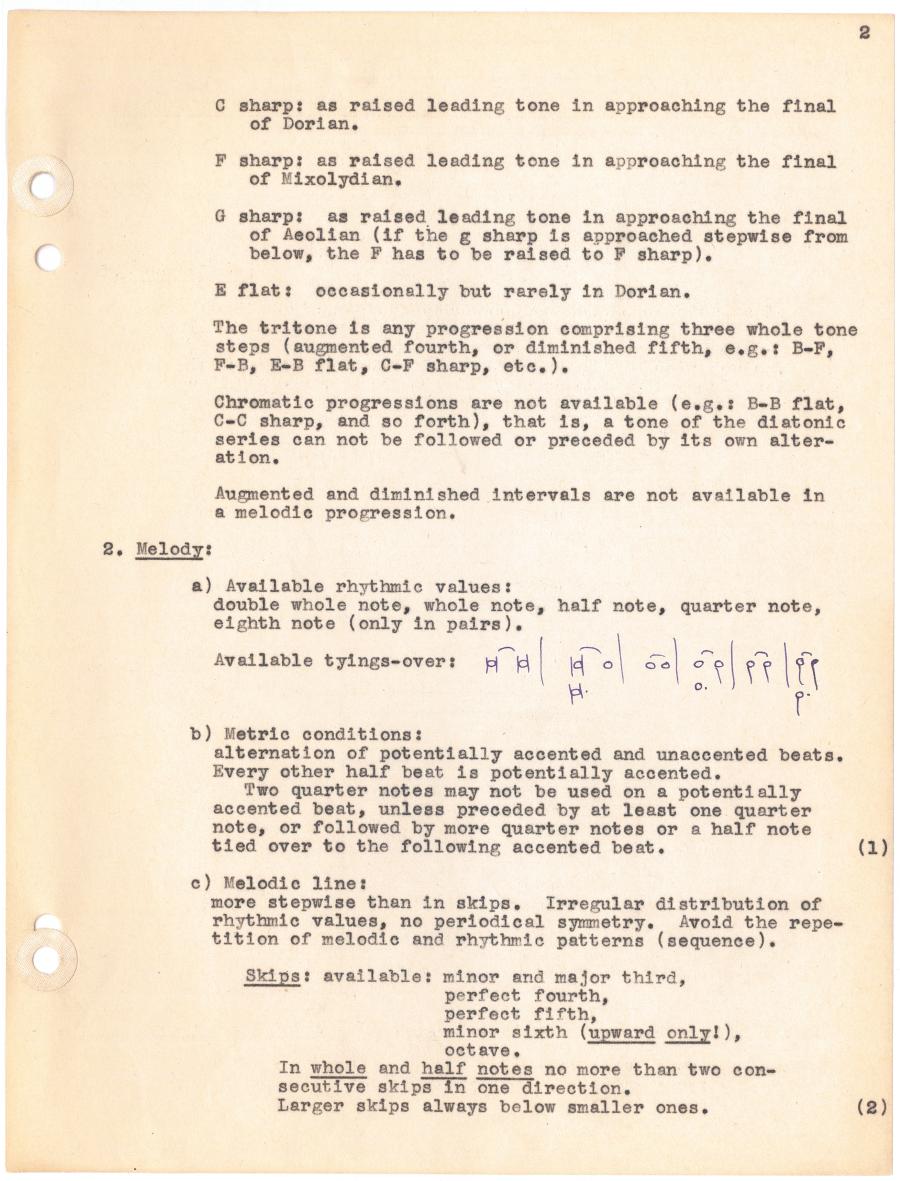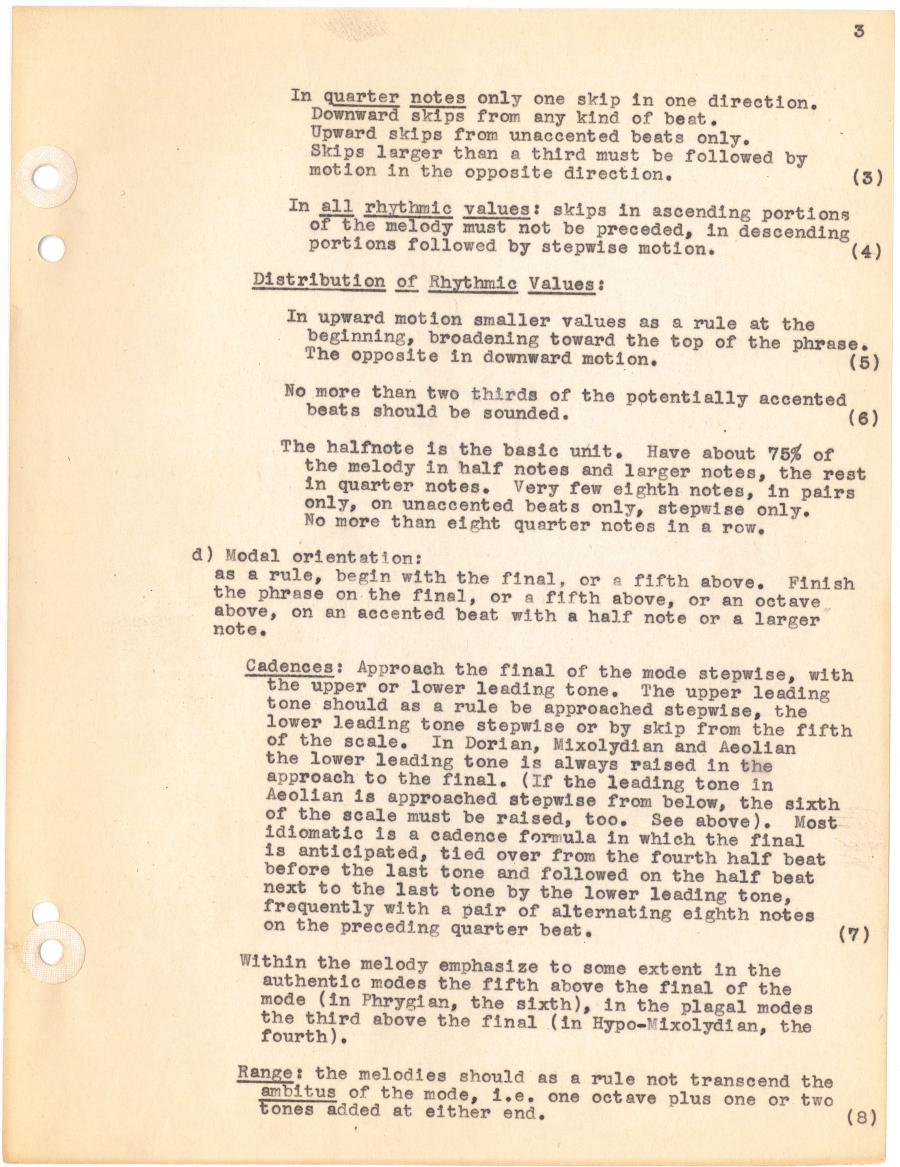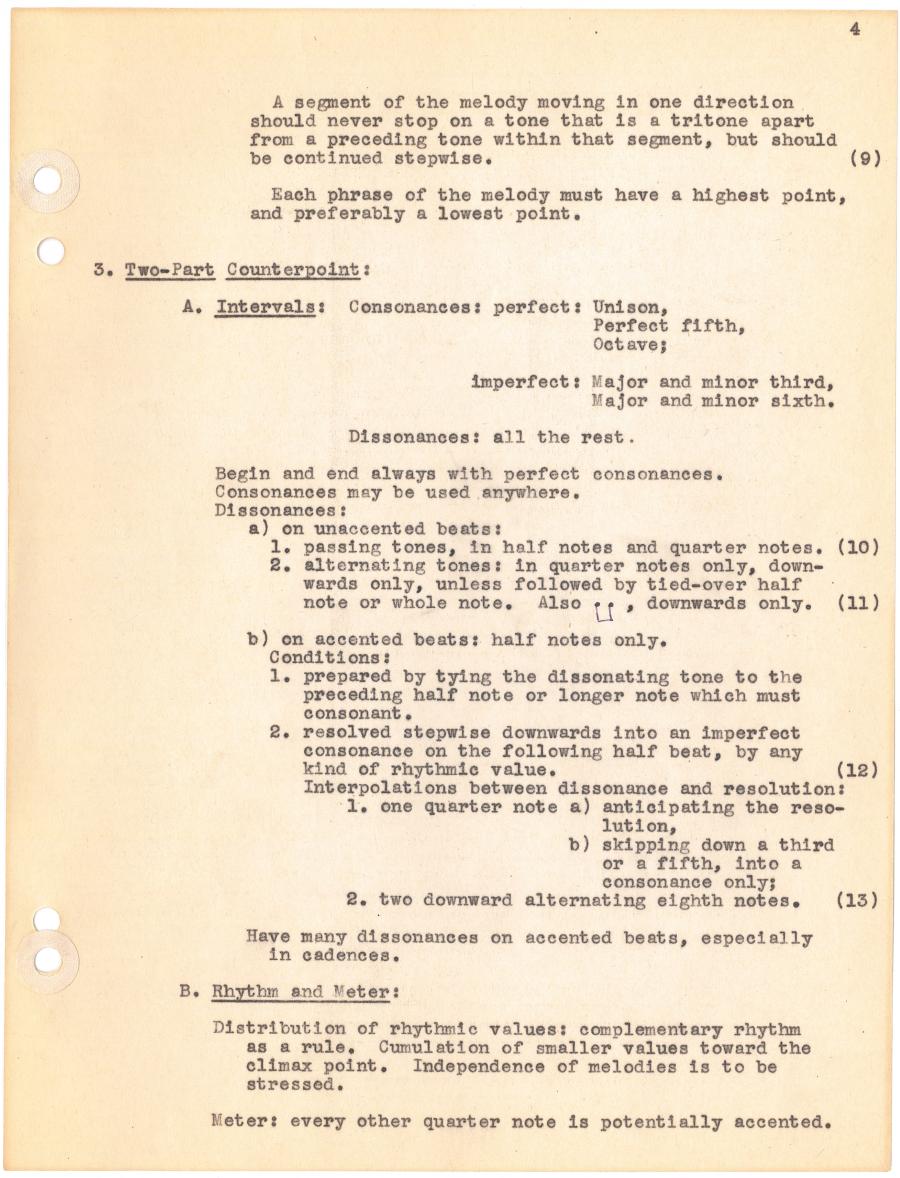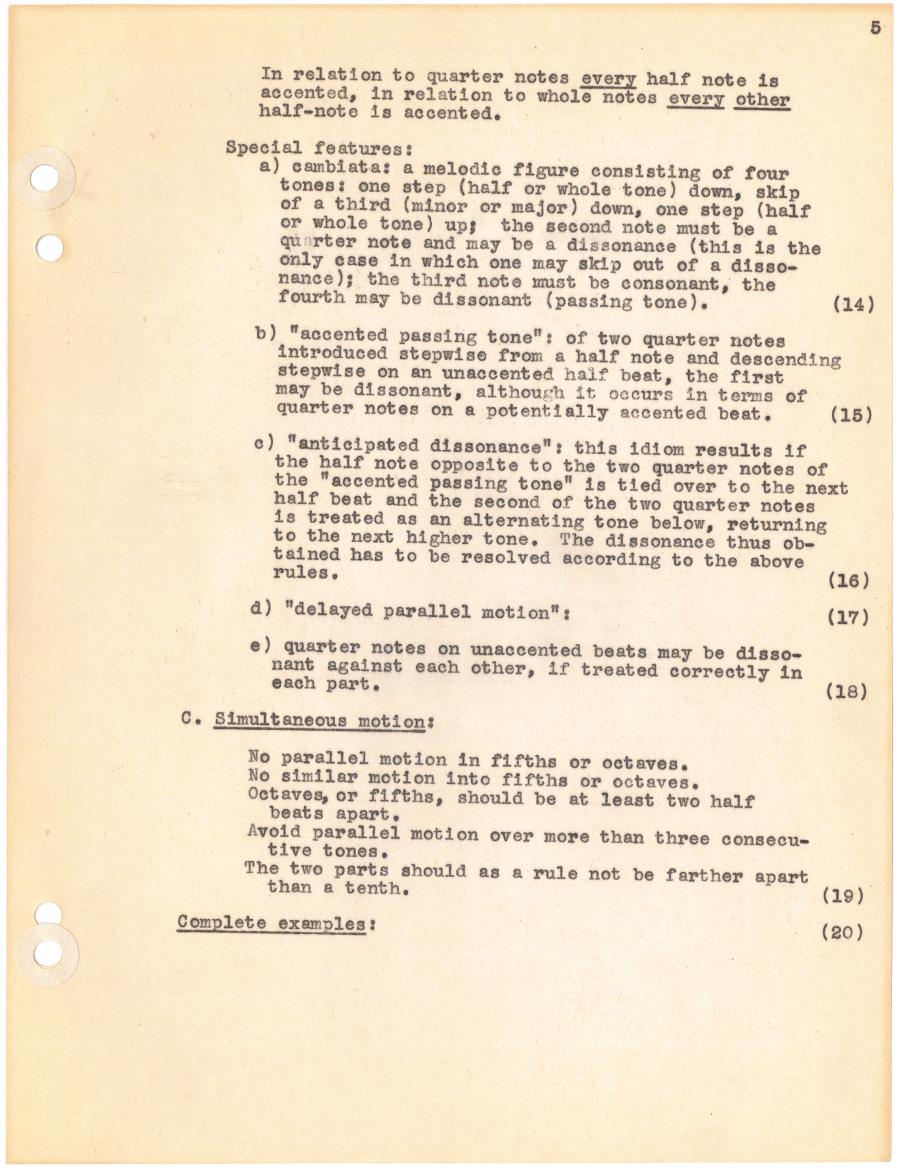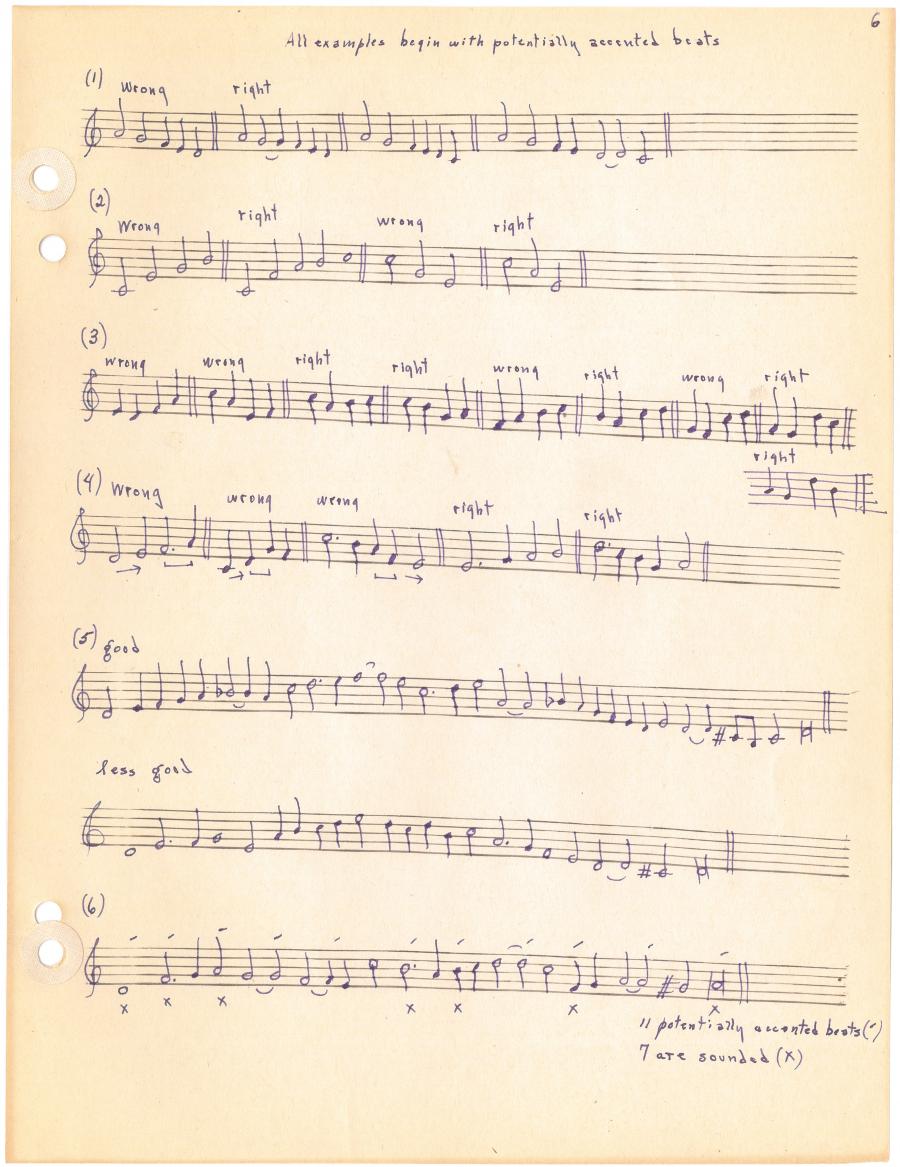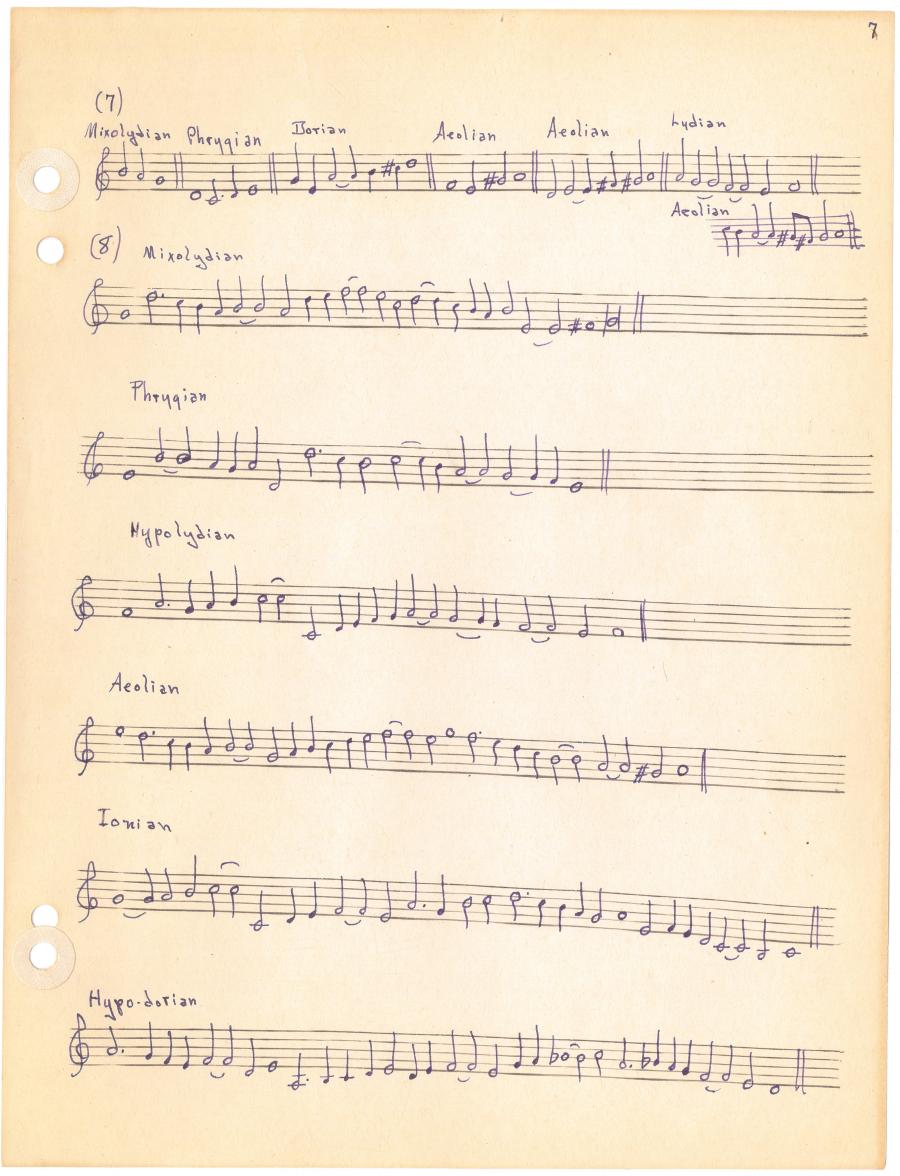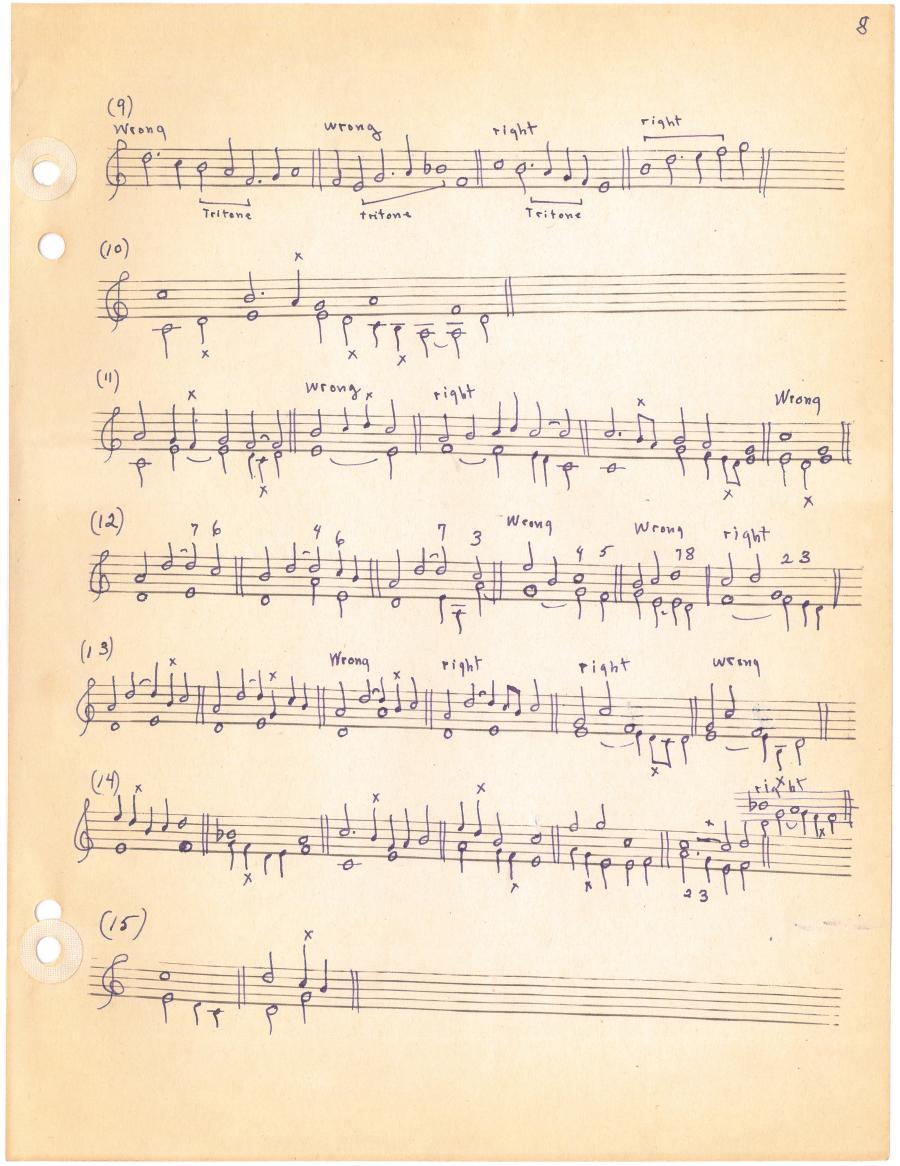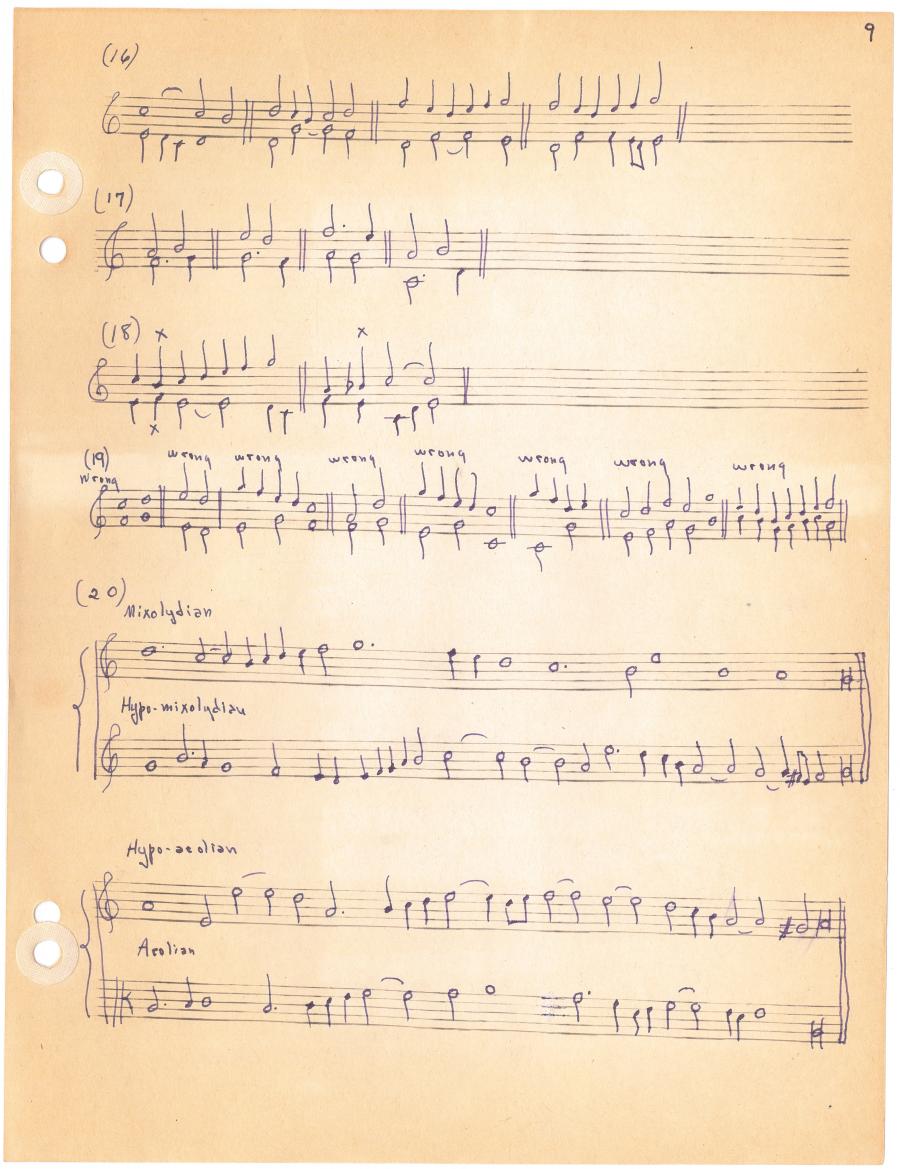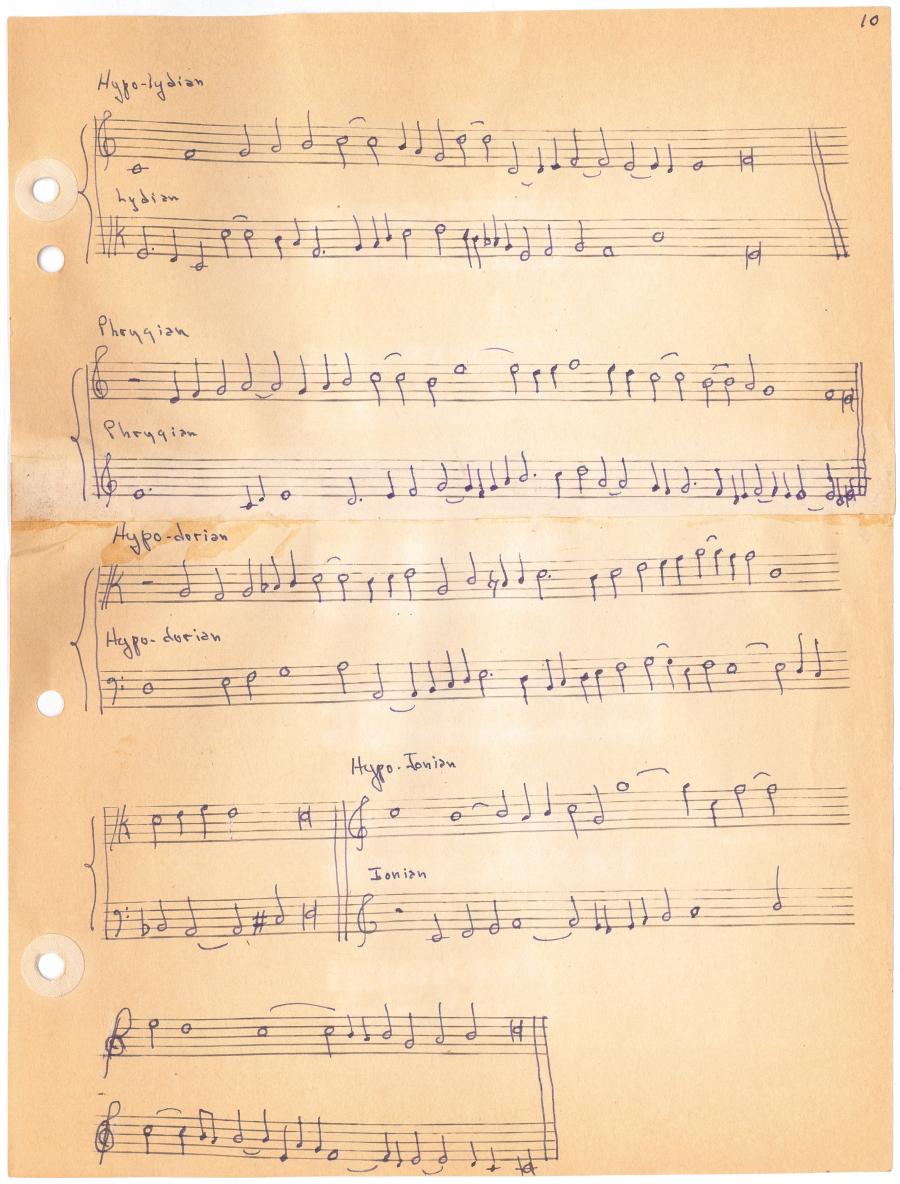Modal Counterpoint in the Style of the Sixteenth Century
Abstract
Ernst Kreneks kompakte Darstellung des Regelwerks der Vokalpolyphonie des 16th Jahrhunderts.
MODAL
COUNTERPOINT
IN
THE
STYLE
OF
THE
SIXTEENTH
CENTURYOutline by
1. Vocabulary:
The diatonic series corresponding to the C major scale
(white keys of the piano). The melodies to be combined
with each other in modal counterpoint move character-
istically in certain segments of that diatonic series,
called modes. Each mode is represented by a modal scale.
There are twelve modes, six of which are called authentic,
the others plagal.
final.
The hypo-modes have the same final as their corresponding
authentic modes.
Musica ficta. The following alterations are available:
B flat: in all modes, in order to avoid tritone pro-
gressions (see below), more generally in Dorian and
Lydian.
C sharp: as raised leading tone in approaching the final of Dorian. F sharp: as raised leading tone in approaching the final of Mixolydian. G sharp: as raised leading tone in approaching the final of Aeolian (if the g sharp is approached stepwise from below, the F has to be raised to F sharp). E flat: occasionally but rarely in Dorian. The tritone is any progression comprising three whole tone steps (augmented fourth, or diminished fifth, e.g.: B-F, F-B, E-B flat, C-F sharp, etc.). Chromatic progressions are not available (e.g.: B-B flat, C-C sharp, and so forth), that is, a tone of the diatonic series can not be followed or preceded by its own alter- ation. Augmented and diminished intervals are not available in a melodic progression.
2. Melody:
a) Available rhythmic values:
double whole note, whole note, half note, quarter note,
eight note (only in pairs).
Available tyings-over: Skips: available: minor and major third,
perfect fourth,
perfect fifth,
minor sixth (upward only!),
octave.
In whole and half notes no more than two con-
secutive skips in one direction.
Larger skips always below smaller ones.
In quarter notes only one skip in one direction.
Downward skips from any kind of beat.
Upward skips from unaccented beats only.
Skips larger than a third must be followed by
motion in the opposite direction. all rhythmic values: skips in ascending portions
of the melody must not be preceded, in descending
portions followed by stepwise motion. Distribution of Rhythmic Values:
In upward motion smaller values as a rule at the
beginning, broadening toward the top of the phrase.
The opposite in downward motion. Cadences: Approach the final of the mode stepwise, with
the upper or lower leading tone. The upper leading
tone should as a rule be approached stepwise, the
lower leading tone stepwise or by skip from the fifth
of the scale. In Dorian, Mixolydian and Aeolian
the lower leading tone is always raised in the
approach to the final. (If the leading tone in
Aeolian is approached stepwise from below, the sixth
of the scale must be raised, too. See above). Most
idiomatic is a cadence formula in which the final
is anticipated, tied over from the fourth half beat
before the last tone and followed on the half beat
next to the last tone by the lower leading tone,
frequently with a pair of alternating eight notes
on the preceding quarter beat. Range: the melodies should as a rule not transcend the
ambitus of the mode, i.e. one octave plus one or two
tones added at either end.
A segment of the melody moving in one direction
should never stop on a tone that is a tritone apart
from a preceding tone within that segment, but should
be continued stepwise.
3. Two-Part Counterpoint:
A. Intervals: Consonances: perfect: Unison,
Perfect fifth,
Octave;
imperfect: Major and minor third,
Major and minor sixth.
Dissonances: all the rest.
Begin and end always with perfect consonances.
Consonances may be used anywhere.
Dissonances:
a) on unaccented beat:
1. passing tones, in half notes and quarter notes. Rhythm and Meter:
Distribution of rhythmic values: complementary rhythm
as a rule. Cumulation of smaller values toward the
climax point. Independence of melodies is to be
stressed.
Meter: every other quarter note is potentially accented.
In relation to quarter notes every half note is
accented, in relation to whole notes every other
half-note is accented.
Special features:
a) cambiata: a melodic figure consisting of four
tones: one step (half or whole tone) down, skip
of a third (minor or major) down, one step (half
or whole tone) up; the second note must be a
quarter note and may be a dissonance (this is the
only case in which one may skip out of a disso-
nance); the third note must be consonant, the
fourth may be dissonant (passing tone). Simultaneous motion:
No parallel motion in fifths or octaves.
No similar motion into fifths or octaves.
Octaves, or fifths, should be at least two half
beats apart.
Avoid parallel motion over more than three consecu-
tive tones.
The two parts should as a rule not be farther apart
than a tenth. Complete examples:
All examples begin with potentially accented beats
